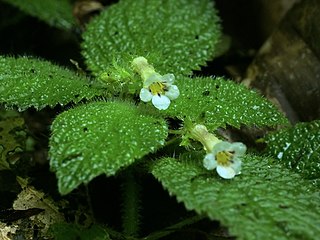
Moths comprise a group of insects related to butterflies, belonging to the order Lepidoptera. Most lepidopterans are moths, and there are thought to be approximately 160,000 species of moth, many of which have yet to be described. Most species of moth are nocturnal, but there are also crepuscular and diurnal species.

The Noctuidae, commonly known as owlet moths, cutworms or armyworms, are the most controversial family in the superfamily Noctuoidea because many of the clades are constantly changing, along with the other families of the Noctuoidea. It was considered the largest family in Lepidoptera for a long time, but after regrouping Lymantriinae, Catocalinae and Calpinae within the family Erebidae, the latter holds this title now. Currently, Noctuidae is the second largest family in Noctuoidea, with about 1,089 genera and 11,772 species. However, this classification is still contingent, as more changes continue to appear between Noctuidae and Erebidae.
Pongidae, or the Pongids, is an obsolete primate taxon containing the gorillas, chimpanzees, and orangutans. They are sometimes called "great apes". Pongidae is now known to be paraphyletic. Pongids split from Hominina around seven mya. The corresponding crown group for this taxon is Hominidae. Pongidae has seven extant member species. This taxon is rarely used today but is of historical significance. ·.

Gesneriaceae is a family of flowering plants consisting of about 152 genera and ca. 3,540 species in the Old World and New World tropics and subtropics, with a very small number extending to temperate areas. Many species have colorful and showy flowers and are cultivated as ornamental plants.
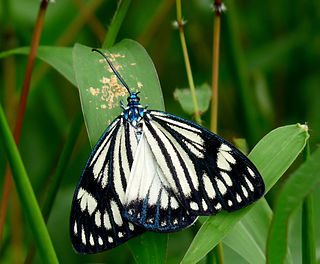
The Zygaenidae moths are a family of Lepidoptera. The majority of zygaenids are tropical, but they are nevertheless quite well represented in temperate regions. Some of the 1000 or so species are commonly known as burnet or forester moths, often qualified by the number of spots, although other families also have 'foresters'. They are also sometimes called smoky moths.

The Gelechiidae are a family of moths commonly referred to as twirler moths or gelechiid moths. They are the namesake family of the huge and little-studied superfamily Gelechioidea, and the family's taxonomy has been subject to considerable dispute. These are generally very small moths with narrow, fringed wings. The larvae of most species feed internally on various parts of their host plants, sometimes causing galls. Douglas-fir (Pseudotsuga) is a host plant common to many species of the family, particularly of the genus Chionodes, which as a result is more diverse in North America than usual for Gelechioidea.
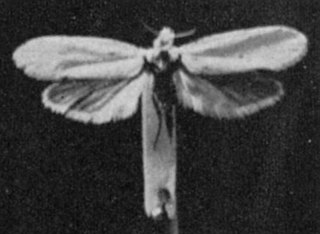
The Prodoxidae are a family of moths, generally small in size and nondescript in appearance. They include species of moderate pest status, such as the currant shoot borer, and others of considerable ecological and evolutionary interest, such as various species of "yucca moths".

Notodontidae is a family of moths with approximately 3,800 known species. Moths of this family are found in all parts of the world, but they are most concentrated in tropical areas, especially in the New World. The Thaumetopoeidae are sometimes included here as a subfamily.

Gracillarioidea is a large superfamily containing four families of insects in the order Lepidoptera. These generally small moths are miners in plant tissue as caterpillars. There are about 113 described genera distributed worldwide, the most commonly encountered of which are leaf miners in the family Gracillariidae.

Gloxinia is a genus of three species of tropical rhizomatous herbs in the flowering plant family Gesneriaceae. The species are primarily found in the Andes of South America but Gloxinia perennis is also found in Central America and the West Indies, where it has probably escaped from cultivation.

Carposinidae, the "fruitworm moths", is a family of insects in the order Lepidoptera. These moths are narrower winged than Copromorphidae, with less rounded forewing tips. Males often have conspicuous patches of scales on either surface. The mouthparts are quite diagnostic, usually with prominent, upcurved "labial palps", the third segment long, and the second segment covered in large scales. Unlike Copromorphidae, the "M2" and sometimes "M1" vein on the hindwings is absent. The relationship of Carposinidae relative to Copromorphidae needs further investigation. It is considered possible that the family is artificial, being nested within Copromorphidae. The Palearctic species have been revised by Alexey Diakonoff (1989).

Diasporus diastema is a species of frog in the family Eleutherodactylidae. Common names include common tink frog or dink frog, supposedly because of the loud metallic "tink" sound that the male frog makes during the night. It is found in Central America, from Honduras through Nicaragua and Costa Rica to Panama. Its natural habitats are tropical humid lowland forests and montane forests, but it can very disturbed habitats. It is found from sea level to 1,620 m (5,310 ft) elevation.
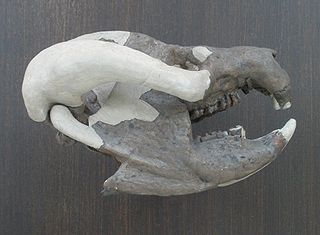
Bienotherium is an extinct genus of cynodonts from the Early Jurassic of China. Despite its size, it is closely related to Lufengia, and is the largest tritylodont from the Lufeng Formation in China.
The Lantana Moth or Lantana Control Moth is a moth of the Noctuidae family. It is endemic to Florida and Texas, but has been introduced in Zambia, Australia, Micronesia, Fiji, Hawaii, Ghana, St. Helena, Tanzania, Uganda and Mauritius as biological control of Lantana camara.
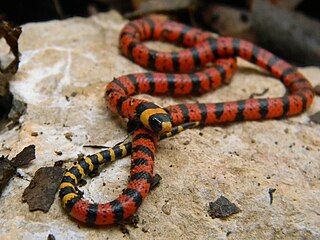
Micrurus diastema, commonly known as the variable coral snake, is a species of venomous snake in the family [Elapidae]]. The species is endemic to southeastern Mexico and northern Central America. There are seven recognized subspecies.
Darwinsaurus is a genus of herbivorous styracosternan ornithopod dinosaur.
Diastema cnossia is a species of owlet moth in the family Noctuidae. It is found in North America.
